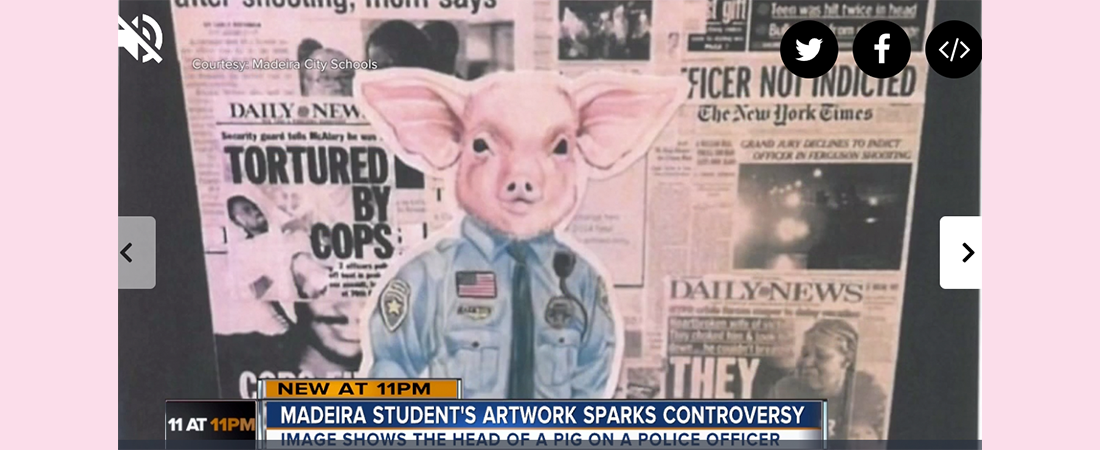As defenders of free expression and artistic freedom, the National Coalition Against Censorship (NCAC) condemns the removal of a student artwork from an exhibition in Madeira, Ohio. The removal of the work shows a deep disregard for the young artist’s constitutional right to free expression, and is a flagrant violation of free speech principles. It is a sad day when the message school administrators choose to send to students is to refrain from expressing their opinions about contemporary social issues lest they offend someone.
In response to complaints, the work was removed from an annual exhibition of art made by Madeira students of different ages. It fulfilled a class assignment where students chose topics from news articles and recreated them as visual art. The controversial work combined newspaper clippings of recent articles about police brutality with a police officer depicted as a pig in uniform.
The exhibition is on view at the Madeira Municipal Building, which also houses the Madeira Police Department headquarters.
Before the show opened, the school received a complaint that the work promoted hatred and divisiveness. After the student artist received threats, Madeira City Schools removed the piece, stating they did so out of concern for the student’s safety.
It is the duty of police, the school and the district to condemn threats of violence against the student rather than “protect” him by silencing him. By bowing to complaints, and failing to protect the artist’s right to express himself, the City and the school failed all its students.
Criticism of government actors, such as law enforcement officials, is one of the foremost reasons why the First Amendment exists. Citizens’ freedom to speak out against perceived governmental abuses and injustices is necessary for the health of our democracy: were government able to silence such criticisms, meaningful political discourse would be impossible.
Removing a young person’s artwork based on its viewpoint sets a precedent for removing any artwork that anyone claims offends them. Future exhibitions are now much more vulnerable to a “heckler’s veto,” which allows the personal opinions of a vocal few to incite viewpoint-based censorship. While everyone is entitled to their feelings and opinions, exercising the heckler’s veto sends a message to young people (and the public) that they should be silent about difficult issues. In this era of intense political polarization, many artworks may be offensive to someone. Claims of offense do not, in and of themselves, justify censoring art.
Government suppression of speech that provokes a strong reaction chills the freedom of all students—now and in the future—to speak.
Header image from WCPO Cincinnati news broadcast.


